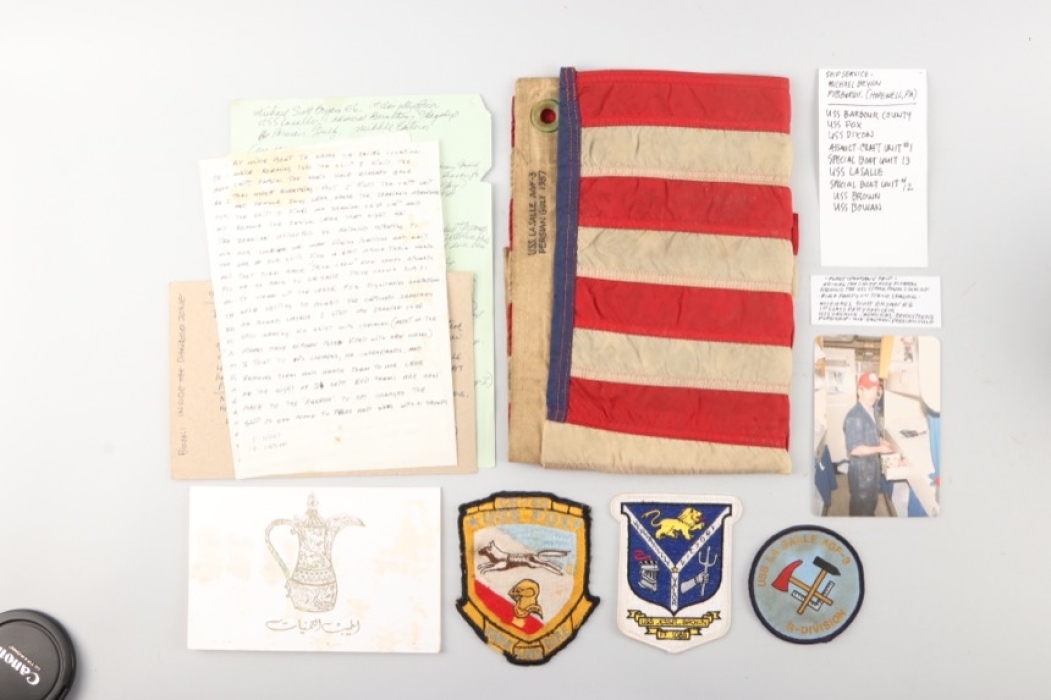2nd USA auction
Die Auktion mit 1036 Losen endete am 22. October 2022. 74% aller Lose wurden verkauft
-
Bezahlung
-
WIE KANN ICH FÜR MEINE BESTELLUNG BEZAHLEN?
AUKTIONAlle erfolgreichen Gebote werden automatisch zu einer einzigen Bestellung zusammengefasst. Für diese können Sie uns nach Auktionsende in Ihrem persönlichen Kundenkonto Ihre bevorzugte Bezahl- und Versandart oder eine alternative Lieferadresse mitteilen.
Wenn wir diese freiwilligen Angaben nicht von Ihnen erhalten melden wir uns automatisch im Laufe des Montags nach Auktionsende mit einer Zahlungsanweisung per Email. Basierend auf Erfahrungswerten schlagen wir Ihnen die bequemste Bezahlmehtode und die günstigste Versandart vor. Sie möchten Ihre Bezahl- und Versandart ändern oder eine alternative Lieferadresse angeben? Kein Problem! Besuchen Sie Kundenkonto/BESTELLUNGEN oder kontaktieren Sie uns per Email.
BESTELLUNGEN IM ONLINESHOPWählen Sie während der Bestellung Ihre bevorzugte Bezahl- und Versandart und schicken Sie diese ab. Sie erhalten Ihre Zahlungsanweisung spätestens am darauffolgenden Tag per Email. Die Zahlungsfrist beträgt sieben Tage. Sie planen eine Bestellung per Ratenzahlung zu begleichen? Bitte sprechen Sie uns gerne vor Ihrer Bestellung darauf an.
Für mehr Informationen zu Bezahlung und Versand, besuchen Sie unsere Häufigen Fragen.
WIR AKZEPTIEREN FOLGENDE BEZAHLARTEN
-
-
Versand
-
IHRE BESTELLUNG IN DEN BESTEN HÄNDEN
VERPACKUNG & SENDUNGSVERFOLGUNGNach Zahlungseingang versenden wir Ihre Bestellung für gewöhnlich am darauffolgenden Werktag. Wir bestätigen den Eingang Ihrer Zahlung per Email und informieren Sie zur Versandvorbereitung. Nach Abholung der Sendung durch unsere Versanddienstleister teilen wir Ihnen die Sendungsnummer per Email mit. Den Status Ihrer Sendung können Sie auch jederzeit unter Kundenkonto/BESTELLUNGEN einsehen. Ihre Rechnung geht Ihnen automatisch am Tag des Versands zu.
VERSAND ZU EINER ALTERNATIVEN ADRESSEBevorzugen Sie für eine Bestellung einen Versand zu Ihrer Arbeitsstelle? Sie sind im Urlaub und wünschen den Versand zu einer Packstation oder einem Freund? Kein Problem! Diese Änderungen können Sie jederzeit unter Kundenkonto/BESTELLUNGEN vornehmen. Alternativ können Sie natürlich jederzeit auch per Email informieren.
UNSERE PARTNER FÜR DEN VERSAND
-
-
Garantie
-
 GARANTIE!
GARANTIE!Alle angebotenen Artikel werden von unseren Experten akribisch auf deren Echtheit geprüft und detailiert beschrieben. Wir bieten ausschließen zeitgenössiche Originale an. Etwa 15% aller Kundeneinlieferungen ensprechen unseren Anforderungen nicht und werden retourniert.
Gekauft wie gesehen? Nicht bei uns. Im Gegensatz zu traditionellen Auktionshäusern bieten wir volles Rückgaberecht of Originalität an. Sollten Sie mit Ihrer Bestellung nicht zufrieden sein, können Sie die Bestellung innerhalb 14 Tagen widerrufen. Bitte kontaktieren Sie uns vor dem Rückversand. Für mehr Einzelheiten besuchen Sie bitte unsere häufigen Fragen.
In eigener Sache: Bieten Sie nur auf Lose, die Sie auch erwerben möchten. Bitte vermeiden Sie Gebote nach Auktionende zu stornieren. Sollten Sie ein fehlerhaftes Gebot abgegeben haben, informieren Sie uns bitte umgehend. Wir löschen Ihre Gebote gerne bis 24 Stunden vor Ende der Auktion.
-
Land Vereinigte Staaten von Amerika ab 1945
Maße
Gewicht
 US Los 62-1034
US Los 62-1034EAN 3000000009062
 US Los 62-1034
US Los 62-1034Epoche 1945 — Gegenwart
Land Vereinigte Staaten von Amerika ab 1945
Material Stoff
Maße
Hersteller
Gewicht
Land Vereinigte Staaten von Amerika ab 1945
 US Los 62-1034
US Los 62-1034Maße
EAN 3000000009062
Hersteller
Gewicht
Vereinigte Staaten von Amerika ab 1945
Group of M. Bryan - USS Stark Chief Fire Fighter
Beschreibung
Michael S. Bryan E6 1st Class Petty Officer’s memento consists of some personal letters, a U.S. Flag flow on the U.S.S. LASALLE AGF-3 during mission on the Persian gulf in 1987,
Bryan was also the chief fire fighter on board of the U.S.S. Stark.
3 patches, one USS LA SALLE AGF-3 R-Division, U.S.S. Fox CG-33 and U.S.S. JESSEL BROWN FF1089.
USS Stark was part of the Middle East Task Force assigned to patrol off the Saudi Arabian coast near the Iran–Iraq War exclusion boundary. At the time, the United States Central Command identified the attacking aircraft as an Iraqi Dassault Mirage F1 fighter. However, later reporting has asserted that the attacking aircraft was a Dassault Falcon 50 business jet which had been modified with a radar and missile hard-points to carry two AM-39 Exocet missiles for anti-shipping operations. The F1EQ-5 variant of the Mirage F1 operated by Iraq at the time was only capable of carrying a single Exocet. Iraq had previously used modified Falcon jets in civilian markings to conduct covert photographic reconnaissance in the Persian Gulf to avoid attracting suspicion.
Initially not alarmed, at 22:09 Captain Glenn R. Brindel ordered a radioman to send the message: "Unknown aircraft, this is U.S. Navy warship on your 078 (degrees) for twelve miles. Request you identify yourself." The Iraqi pilot did not respond to the message. The ship's captain ordered a second message sent, to which there was no reply. At 22:10 Captain Brindel was informed the Iraqi aircraft had targeted his ship, locking his Cyrano-IV fire-control radar onto Stark. The Iraqi aircraft then fired the first Exocet missile 22 miles (35 km) from the ship, and the second Exocet from 15 miles (24 km). The pilot then banked left and began to withdraw.
Stark's search radar, ESM and CIWS systems failed to detect the incoming missiles. The first Exocet missile struck the port side of the ship near the bridge. Although it failed to detonate, rocket fuel ignited and caused a large fire that quickly spread throughout the ship's post office, storeroom, and the critical combat operations center (where the ship's weapons are controlled).
The second Exocet also struck the port side, 30 seconds later. This missile detonated, leaving a 10 by 15 ft (3.0 by 4.6 m) hole in the frigate's left side. Electronics for Stark's Standard Missile defense went out and Captain Brindel could not order his men to return fire. An AWACS plane was still in the area and just after witnessing the attack, radioed a nearby Saudi airbase to send aircraft for an interception, but the ground controllers did not have the authority to order a sortie and the Iraqi jet left unharmed. The USN (United States Navy) rules of engagement applicable at the time allowed Stark to defend herself after sufficiently warning the hostile aircraft. A total of 37 crew were killed in the attack, 29 from the initial explosion and fire, including two lost at sea. Eight later died from their injuries. Twenty-one others survived their wounds.
Captain Brindel ordered the starboard side flooded to keep the hole on the hull's port side above water. This helped prevent the Stark from sinking. Brindel quickly dispatched a distress call after the first missile hit. It was received by USS Waddell, which was in the area, and USS Conyngham with two-thirds of its crew on liberty in Bahrain. Waddell and Conyngham arrived to provide damage control and relief to Stark's crew. According to the Pentagon, an Iranian helicopter joined a Saudi Arabian vessel to aid in rescue operations.
Zustand
1-
Verkäufer
History Trader Inc., 521 Thorn Street #165, Sewickly, PA 15143-0165, USA


